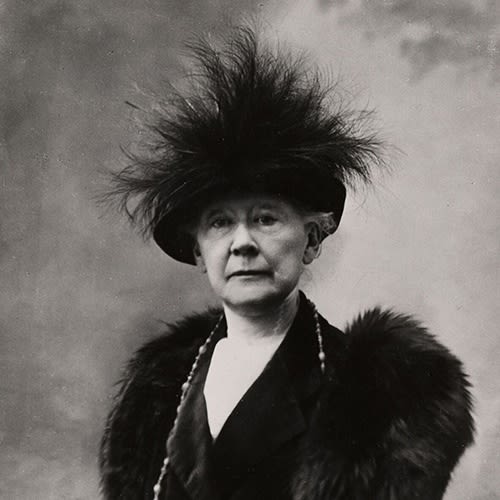Mary Cassatt 1844-1926
I accepted with joy. I hated conventional art. I began to live.
- Mary Cassatt
Mary Cassatt bears the distinction of being one of the only American women artists to achieve the status of a "household name". Indeed, she was exceptional in many respects, and served as trailblazer to the countless women who sought to follow in her footsteps. Cassatt was born into a family of wealth and privilege, and even as a child, she had the opportunity to spend time in Europe. She became determined at an early age to pursue a career as a professional artist, and she entered the Pennsylvania Academy of the Fine Arts when she was just fifteen years old. However, her ambitions soon caused her to look beyond its confines, as she recognized that any serious artist aspiring to be a professional had to study in Europe.
So in 1865, Cassatt travelled abroad to Paris, accompanied by her close friend Eliza Haldeman and her mother. At this time, opportunities for women to study in Paris were severely limited; the Ecole des beaux-arts was closed to women, and the Academie Julian had not yet begun accepting female students. However, Cassatt sought alternative instruction, attending an art class with Charles Chaplin and even obtaining private lessons with the renowned instructor, Jean Léon Gérôme. Cassatt was determined to be taken seriously as a professional artist, and she repeatedly submitted original compositions to the annual Paris Salon.
Although Cassatt was briefly forced to return to the United States in 1870 due to the outbreak of the Franco-Prussian War, she soon found an opportunity to travel abroad once again. After spending time in Italy and Spain, she recognized that Paris was the center of the modern art world and settled there permanently in 1874. As part of the leisured class, Cassatt participated in all the fashionable recreations in Paris, and her paintings from the late 1870s, which frequently depicted society women at the opera or theater, reflected this privileged life. However, by far the most important influence on Cassatt's artistic development during this time was her introduction to the work of Edgar Degas. She later reflected later, "The first sight of Degas['s] pictures was the turning point in my artistic life." By 1877, the two artists had met, and they were ultimately to become life-long friends. Moreover through Degas, Cassatt was introduced to the circle of artists known as the Impressionists, which included Monet, Morisot, Pisarro, Renoir, and Sisley, and by 1879, she had begun participating in their exhibitions.
Cassatt's work during this period reflects her close relationship with Degas, who served as her mentor. The close affinity between their art was particularly apparent in their use of striking color combinations and their choice of subject matter taken from scenes of modern Parisian life. However, Cassatt most closely resembled Degas in her adoption of the pastel medium for exhibition pictures. By this time, Degas had already gained considerable experience in experimenting with pastels and had clearly distinguished himself in the medium. Yet, within just a few years, Cassatt developed her own remarkably confident technique, and her early pastels display a level of sophistication unusual in a beginner. Her colors are pure and un-muddied, and she developed the practice of building the surface up by layering linear strokes of pastel over stumped or blended under-layers and applying fixative in between to adhere the material to the surface.
After the 1886 Impressionist exhibition, the group began to dissolve, and Cassatt's art started to move away from Degas's influence. She began to focus almost exclusively on the theme of mothers and children, which she had first explored as early as 1880. She was praised for her paintings of this subject in the 1881 Impressionist exhibition by the critic Joris Karl Huysmans who remarked, "But of course, a woman is equipped to paint childhood. There is a special feeling men would be unable to render unless they are particularly sensitive and nervous. Their fingers are too big not to leave some rough and awkward mark." While this comment attests to a pervasive stereotype concerning the domestic role of women, Cassatt's decision to focus on mothers and children also reflects society's increasing emphasis on the importance of children and their care. Throughout the nineteenth century, infant mortality remained high, and by the end of the century, scientists were finally developing a science of child-rearing and seeking to involve mothers in the primary care of their offspring.
